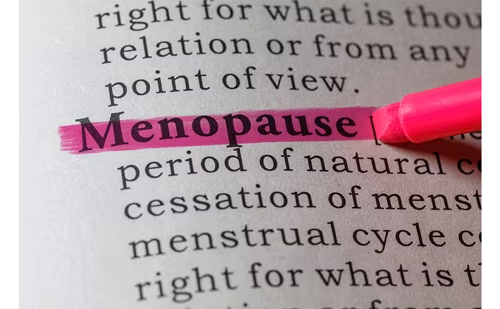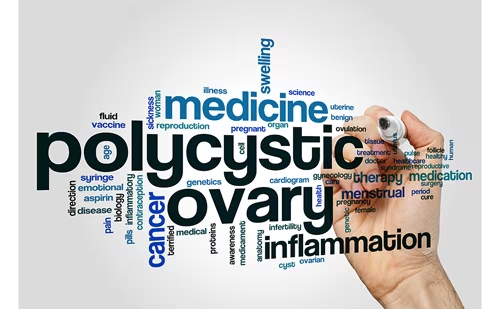Sexual medicine in the year 2006 is receiving the attention of the medical community, not because we have been convinced that there are 150 million men worldwide with erectile dysfunction (ED), and not because we are concerned that ED has enormous implications for quality of life, but rather because of the new overwhelming evidence that ED is comorbid with cardiovascular disease (CVD), hypertension, diabetes, and the metabolic syndrome, and that there is strong data that ED may precede the clinical manifestations of CVD. In other words, ED may be a sentinel marker that cannot be ignored.
Sexual medicine in the year 2006 is receiving the attention of the medical community, not because we have been convinced that there are 150 million men worldwide with erectile dysfunction (ED), and not because we are concerned that ED has enormous implications for quality of life, but rather because of the new overwhelming evidence that ED is comorbid with cardiovascular disease (CVD), hypertension, diabetes, and the metabolic syndrome, and that there is strong data that ED may precede the clinical manifestations of CVD. In other words, ED may be a sentinel marker that cannot be ignored. Currently, 70–90% of men with ED are not treated or properly diagnosed. They are not being evaluated for their comorbid conditions and this has led to potentially devastating consequences.
In the US, according to recent census data, 28% of male deaths are attributed to CVD with an additional 5% attributable to cerebral vascular disease, and at least 3% to diabetes. The opportunity to reduce the 350,000 deaths among men by monitoring erectile performance as early warning sensors for future vasculopathy raises the discussion of ED to a status it deserves.Thompson et al. presented elegant data on more than 9,000 men followed over a nine-year period in a recent article in the Journal of the American Medical Association. In those men who had ED at the onset, or developed ED during the study, the risk of developing CVD was 1.45, comparable with the risks associated with smoking or a family history of myocardial infarction (MI).
In studies appearing in the Archives of Internal Medicine, further linkage with CVD was noted. In one study by Grover, 49% of the men had ED, and the presence of CVD or diabetes raised the risk of ED by 1.45 and three, respectively. Grover’s studies were conducted in Canada. In a second study, men who were referred for nuclear stress testing at the University of Chicago were studied by Ward et al., who noted that 55% had ED and it was associated with more severe coronary heart disease (CHD), shorter exercise testing, and left ventricular (LV) dysfunction. The results suggest that sexual function was a useful tool in stratifying risk in individuals with CHD.
The burden shifts to the medical profession to overcome whatever barriers exist in not initiating discussions of ED with their patients. The following excuses are no longer acceptable:
- embarrassment;
- inadequate knowledge or skills of physicians;
- lack of awareness of comorbidity;
- belief that improving the quality of life is not a high priority in medical practice; and
- evaluation of ED is time-consuming and comes with poor reimbursement.
The consequences of not initiating or pursuing ED can have serious CV consequences for the patient. The fact that patients actually believe that 70% of physicians would dismiss sexual concerns as being unimportant, or that 68% fear that the clinician might be embarrassed, is a problem and a significant barrier that makes it difficult for patients to initiate the important dialogue. The patient’s own partner’s lack of interest or a fear of treatment side effects are additional barriers. Raising awareness of the CV linkage is likely to facilitate dialogue between partners and between patients.
The common pathologic pathways for ED and CVD include oxidative stress (OS) disorders, interference with nitrous oxide pathways, and increased adhesiveness of platelets and neutrophils. The link between the vasculopathy and ED provides the physician with a powerful new argument for their male patients to stop smoking, achieve normal lipid status, start engaging in regular physical activity, and start to follow a healthy nutrition program.
Metabolic syndrome, a linked but separate entity, provides further establishment of comorbidity with ED. Obesity, hyperlapidarian, low high-density lipoprotein (HDL) levels, hypertension, and blood glucose abnormalities are all, separately and in combination, related to ED. The fact that metabolic syndrome may also be linked to hypogonadism is particularly interesting, but is not the subject of this paper.
The common pathologic findings of abnormalities of nitric oxide (NO) production or responsiveness and increased production of glycosylation products, which injure blood vessels, lead to a further understanding of the relationship between metabolic syndrome and ED. ED may precede metabolic syndrome or be noted concomitantly.
The reflex to treat patients with ED with a phosphodiesterase type-5 (PDE-5) inhibitor must be accompanied by a fervent desire to evaluate the patient. A relatively non-invasive work-up is frequently sufficient:
- family history;
- smoking history; and
- directed physical examination of the heart, lungs, blood vessels, testicles, and prostate.
Routine blood evaluation, including cholesterol, blood sugar, and possibly testosterone level when appropriate, is frequently all that is necessary in the initial evaluation of patients with ED. As part of the initial evaluation, onset of the erectile problems, morning erections, and partner issues are clearly required. Social issues such as sleep patterns, substance abuse, and medications are important factors to consider in men with ED. Clearly, the effective treatment of ED improves quality of life of patients and their partners, but also serves as an incentive to start to reverse the pathologic process that is responsible for the condition.
At the fall meetings of the Sexual Medicine Society of North America in New York, there were several reports that will now be highlighted, comparing the three different PDE-5 inhibitors. Discussion of the different PDE-5 inhibitors is always of interest to the public and to physicians. The author believes that if one were to interview the majority of sexual medicine experts, they would express belief that each of these three agents (sildenafil, vardenafil, and tadalafil), when taken and used properly, are effective, safe, and well tolerated. There are differences in in vitro potency studies, absorption with meals, and duration of action. These reports were reviewed by Goldstein et al. Patients should be given a choice to determine which of the three is preferred and is appropriate for their own lifestyle.
A few of the papers that the author found interesting include a review of a rescue trial in which patients older than 50 years of age, with severe arterial insufficiency, were assessed by intracavernosal pharmacotesting. They had failed Viagra® on numerous occasions, but were then exposed to vardenafil. In the report by Brecent and Prudent, there was a 12% salvage rate with vardenafil. In another trial, tadalafil efficacy was tested in PDE-5-inhibitor-naïve patients as well as with ED patients who had previously used sildenafil. Tadalafil improved erectile function compared with placebo in sildenafil-naïve as well as prior sildenafil users, implying that outcome trials were probably not affected by the exclusion of sildenafil non-responders.
In long-term safety trials with sildenafil, the question of whether patients gradually developed tachyphylaxis, or drug insensitivity, over time was answered in a long-term study. This study reported that after following patients over several years there were no reports of any tachyphylaxis. Continued patient satisfaction was noted. In additional studies, novel agents were presented including a new long-acting PDE-5 inhibitor, SLx-2101, with a 40-hour duration. These studies are currently in progress. Avenafil, a novel highly specific and rapidly metabolized PDE-5 inhibitor with a short duration of action, was also described. The selectivity is particular to this agent and may be responsible for a reduction in adverse affects. Studies with glycerol trinitrate were described suggesting a less serious drug–drug interaction.
A discussion of non-arteritic anterior ischemic neuropathy (NAION) is important. Emphasis on the common risk factors (age, ischemic heart disease, hypertension, diabetes, and smoking) is common clearly to both ED and NAION. NAION has been reported in 2.5 per 100,000 men older than 50 years, with an increased risk for men with special optic nerve abnormalities. In the Pfizer post-marketing study, the incidence of NAION in monitored patients was low, and possibly lower than that reported in the general population.
A final study revealing a novel approach to priapism caught the attention of the author. Doses of sildenafil (25–50mg) and tadalafil (5mg), thrice-weekly, were used with the belief that candidates with priapism really had a dysregulation of the PDE-5 system. The authors studied three men with priapism, two of whom had sickle cell disease. The treatment resulted in a significant diminution in priapism episodes.
In conclusion, the author believes that the year has been very exciting for people in the field of sexual medicine. It has broadened the significance of studying men with ED. Who would have believed that the study of erections would reveal such great insights into the essence of men’s health issues? ■
A version of this article containing references can be found in the Reference Section on the website supporting this briefing (www.touchendocrinedisease.com).







